With the grand launch of Nita Mukesh Ambani Cultural Centre next week, the hope is that the city and country will finally showcase performance spectacles. But it will all depend on how far and wide the visionaries go with their ambition. Here is an exclusive insider look...

The Great Indian Musical: Civilization To Nation, will debut at the opening ceremony. It is touted to be the country’s biggest ever musical, conceived and directed by renowned playwright Feroz Abbas Khan, and will feature a crew of 800
Among the more interesting voices pushing for inclusive spaces in Mumbai is urbanist Prathima Manohar, who not very long ago told mid-day that if given a chance, she’d reimagine Bandra Kurla Complex as a “livelier” neighbourhood. “[At present] it’s a single-use place. You go there in the morning, and return by evening,” she had said. Her blueprint included markets for art and handicrafts, food pop-ups, and cultural spaces to revitalise the business district.
Arriving at the lotus-themed Nita Mukesh Ambani Cultural Centre (NMACC), a first-of-its-kind multi-disciplinary cultural and arts space at the Jio World Centre on G Block, this writer wonders if Manohar’s “ideal BKC” is in the process of becoming.
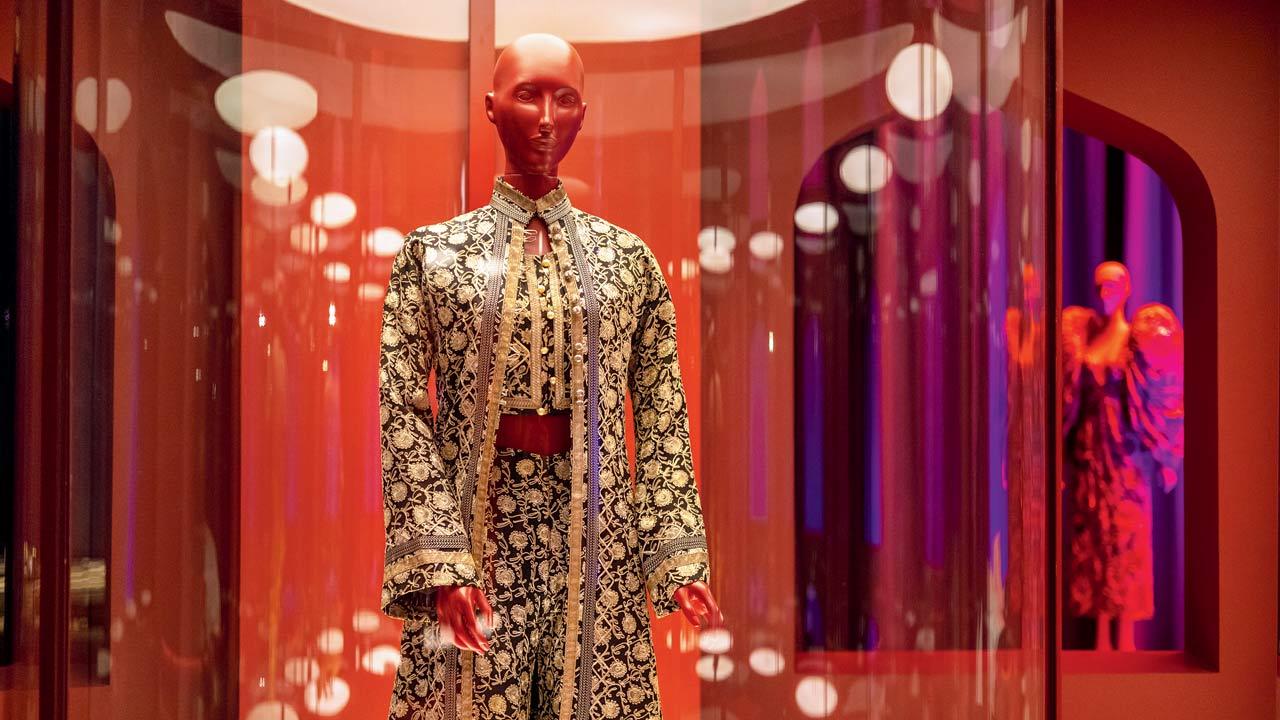 The costume art show, India in Fashion: The Impact of Indian Dress and Textiles on the Fashionable Imagination, will map India’s influence on global fashion between the 18th and 21st centuries. Lent by The Metropolitan Museum of Art, Gift by Jane Holzer, 1977
The costume art show, India in Fashion: The Impact of Indian Dress and Textiles on the Fashionable Imagination, will map India’s influence on global fashion between the 18th and 21st centuries. Lent by The Metropolitan Museum of Art, Gift by Jane Holzer, 1977
We find the team in the throes of preparation for the mega launch slated for later next week. The staff is caught up in a training drill, and ongoing cleaning has kept most of the furniture out of view. The ambience is stark, until we pass a pristine, white marble shrine dedicated to Lord Krishna and his beloved Radha, back-dropped by the Kamal Kunj, a gargantuan 56-foot Pichwai painting—one of the largest-ever commissioned—with lotus motifs and peacocks.
It’s clear that the centre’s template is colossal. The scale becomes more real to us when we walk into The Grand Theatre, modelled on LA’s iconic live-performance audi Dolby Theatre—formerly the Kodak Theatre. The NMACC website attributes the design to Steve Clem and Nick Wolfcale of TVS Design, and Brian Hall of Theatre Projects Consultants.
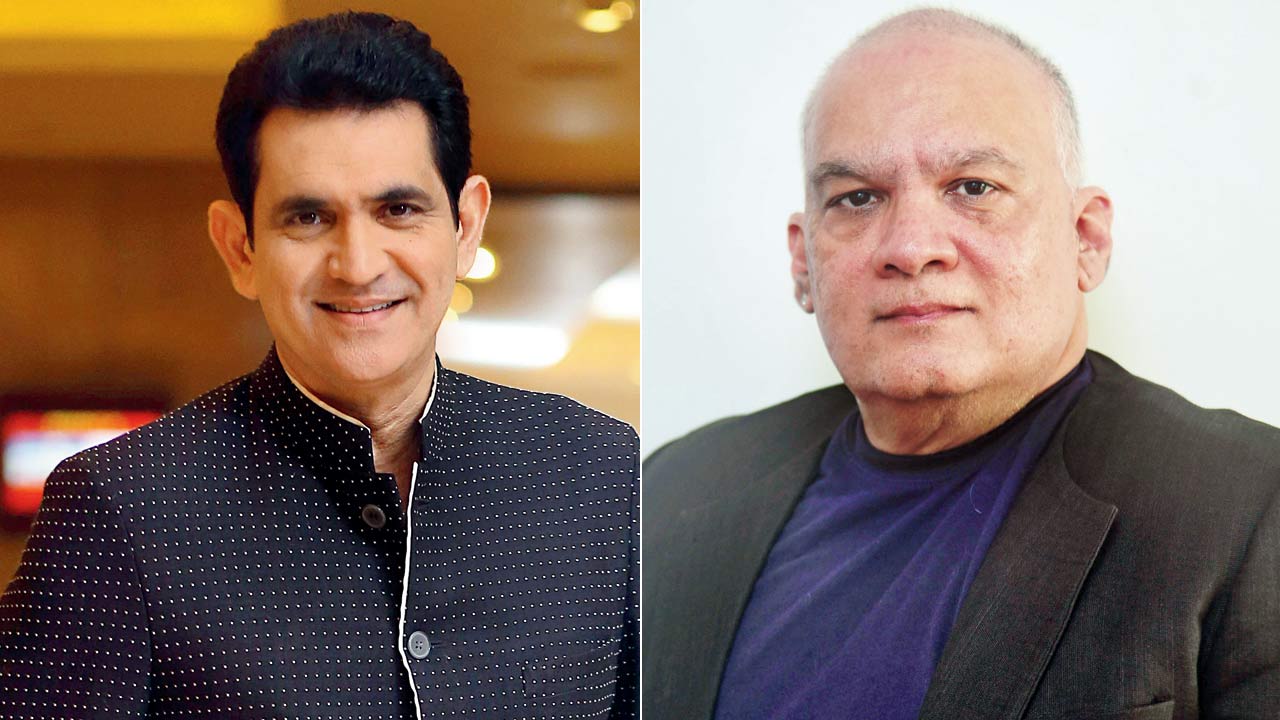 Omung Kumar, set designer and director and Rahul da Cunha, writer-director
Omung Kumar, set designer and director and Rahul da Cunha, writer-director
The theatre is dimly-lit, sans the pomp and bling we had braced ourselves for. A light rehearsal of Feroz Abbas Khan’s The Great Indian Musical: Civilization To Nation is underway, in time for its debut at the opening ceremony.
As we walk into the auditorium’s Dress Circle, we witness the panorama ahead. We’ve been to grand prosceniums before—the impressive 1,100-seater Royal Opera House Muscat in Oman, which seamlessly blends Islamic and Italianate architectures. While Mumbai boasts of large seaters too, it’s only the diminutive Baroque-style Royal Opera House that has captivated our operatic heart.
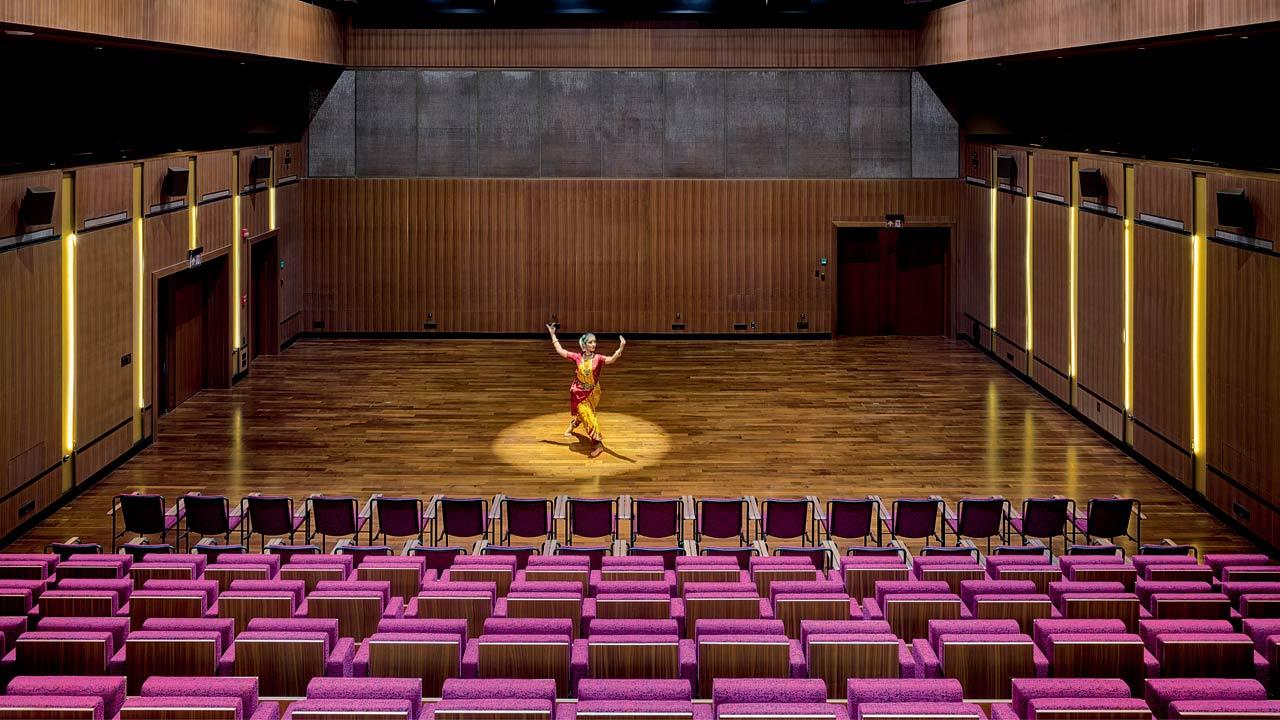 The Studio Theatre and The Cube, which are smaller experimental venues, have been designed to cater to a wide range of arts, and foster younger and emerging artistes who are keen on doing more intimate work
The Studio Theatre and The Cube, which are smaller experimental venues, have been designed to cater to a wide range of arts, and foster younger and emerging artistes who are keen on doing more intimate work
The Grand Theatre expands this spectacle manifold. This 2,000-seater, boasting of a sweeping stage that can make extra room for a live orchestra, and ornamented by lotus-carved wall jaalis and a ceiling studded with 8,400+ Swarovski crystals, takes this imagination several notches higher.
“The theatre has three levels,” an NMACC representative walking us through, shares. “There is the ground level [1,000+ seats], then comes the first level [the Dress Circle, with 370 seats], and the second and third level, which form the second balcony [comprising 600 seats].”

Defined by its curved lines, the venue encourages the audience to embrace the artistes on stage. “The focus is not just the connection between the audience and the actor, but the audience to itself,” the NMACC representative says, explaining, “When you look at how the rows are laid out, you’ll realise it is done in a manner that every audience member is aware of other people in the room.” This, he says, makes the experience more participatory. “So, for instance, when something funny happens on the stage, the audience erupts, and not just those sitting at the bottom who usually get the joke.”
Removable seats on the ground floor to wheel in guests, and detachable arm rests, for the semi-ambulatory, are small design gestures that make the space inclusive. Not to mention the “crying room”, a sound-proof booth that offers a clear view of stage, for parents having to deal with wailing children in between a live performance. Dedicated translation booths can translate a performance into 16 languages.
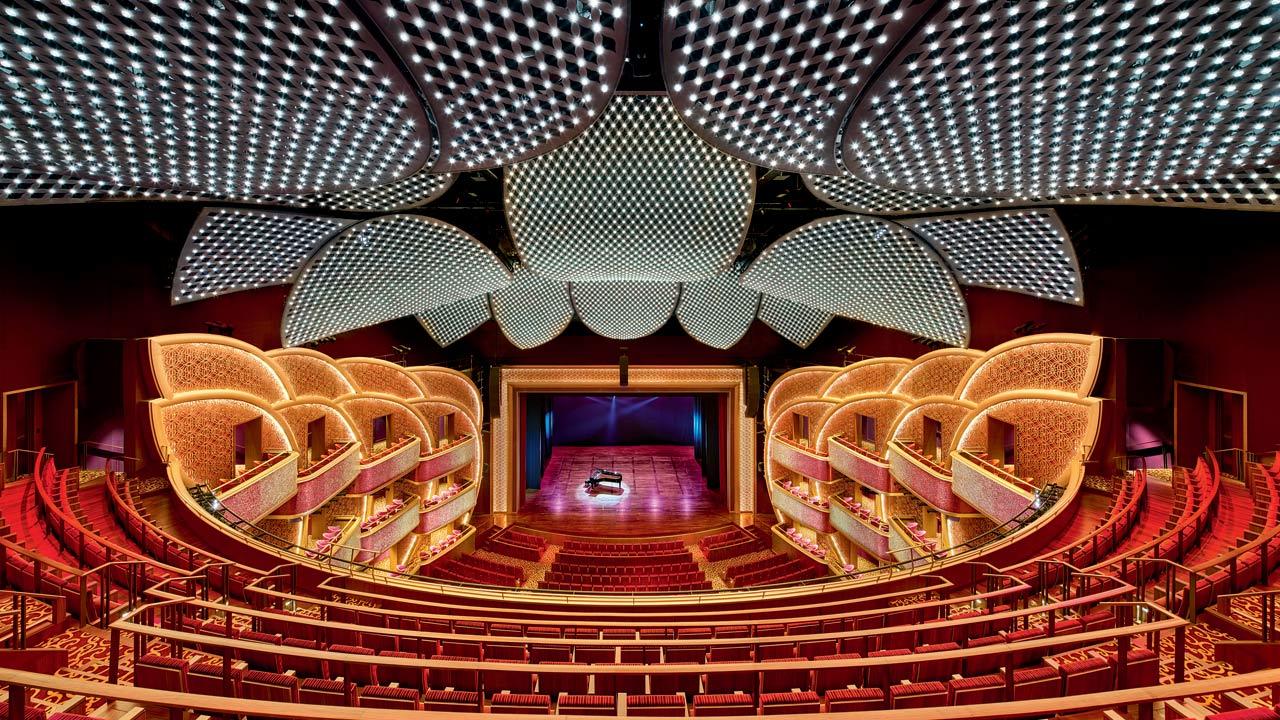 The Grand Theatre has been modelled on LA’s iconic live-performance audi Dolby Theatre—formerly the Kodak Theatre. The 2,000-seater boasts of a sweeping stage that can make extra room for a live orchestra, and is ornamented by lotus-carved wall jaalis and a ceiling studded with 8,400+ Swarovski crystals
The Grand Theatre has been modelled on LA’s iconic live-performance audi Dolby Theatre—formerly the Kodak Theatre. The 2,000-seater boasts of a sweeping stage that can make extra room for a live orchestra, and is ornamented by lotus-carved wall jaalis and a ceiling studded with 8,400+ Swarovski crystals
Carpeted steps from the Dress Circle lead to a diamond box embellished from the outside with hand-cut mosaic tiles from Italy in hues of gold and red. Each box can occupy five persons, and comes with a private lounge that can be accessed from the exit. There are 18 such boxes, built at pivotal viewing points, and at varied elevations. From the box, this writer could see 90 per cent of the stage. This, the representative tells us, is an interpretation of Broadway theatre. “Broadway theatres tend to push balconies closer to the stage, so that an artiste can feel like they can shake the hand of the person sitting in the box. The connection between the actor and the audience is immediate. The first box is really right above the stage... it gives you a sense of community coming into the play without breaking that wall.”
Also Read: Nita Mukesh Ambani Cultural Centre
With integrated recording and projection facilities, and one of the largest audio installations in the country (Dolby Atmos Surround Sound System and Virtual Acoustic System), the theatre has been designed to stage everything from Indian classical dance and mega musicals to screening movies, and most importantly, host major international productions and touring houses who come with large-scale sets. “It’s about providing more, so that there is less need for people to get tech and other support from outside,” he says. “We are giving people the infrastructure to imagine something that wasn’t even on their radar, or which to their mind was not possible... the idea is to spark imagination. The building and your programming has to reflect and enhance your community.”
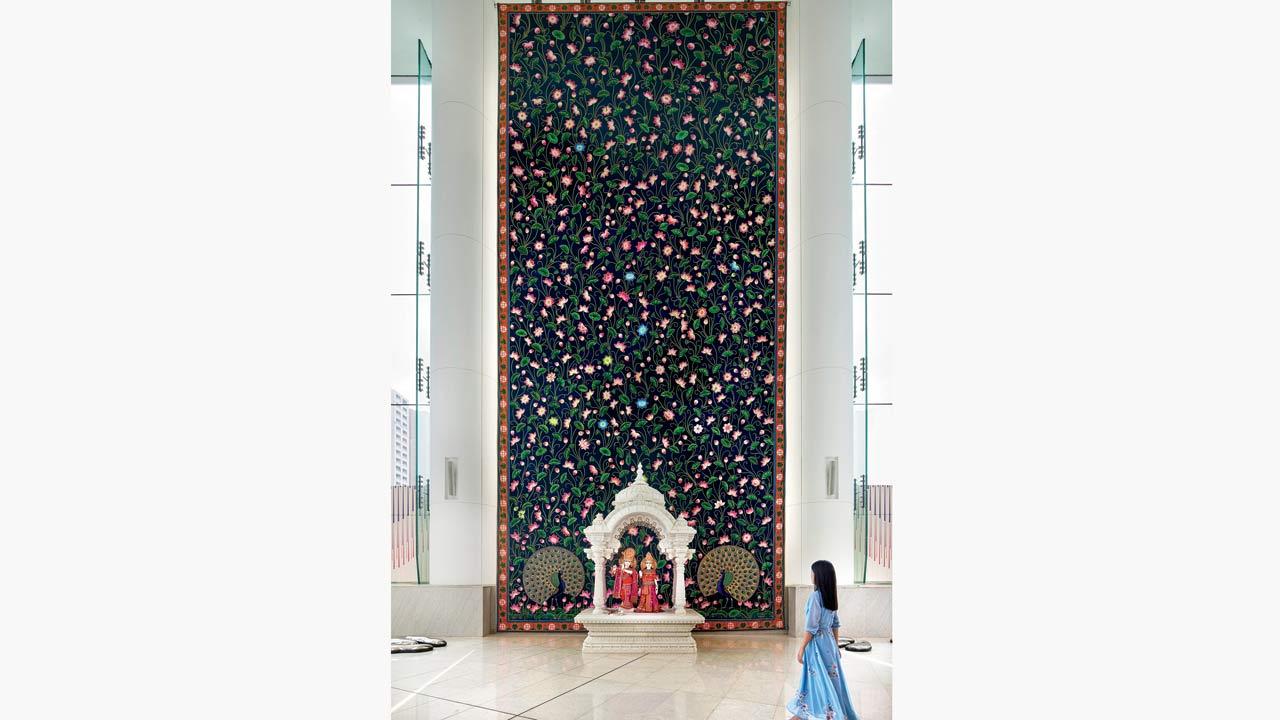 Kamal Kunj, a gargantuan 56-foot Pichwai painting—one of the largest-ever commissioned—with lotus motifs and peacocks, forms the backdrop of a marble shrine of Lord Krishna and Radha at the NMACC
Kamal Kunj, a gargantuan 56-foot Pichwai painting—one of the largest-ever commissioned—with lotus motifs and peacocks, forms the backdrop of a marble shrine of Lord Krishna and Radha at the NMACC
Playwright-director Feroz Abbas Khan’s opening production will feature a crew of 800, including a 55-piece live orchestra led by the Budapest Scoring Orchestra. He says that this is the space that allowed his imagination to explode. “When you have something like The Grand Theatre, you are faced with unlimited possibilities. If it wasn’t for the theatre that we were working in, the production would have been something different. The infrastructure available to us inspired some of the finest global talent to commit their time to collaborate on it,” he tells mid-day.
Nita Ambani, Founder and Chairperson, shares, “Our Cultural Centre is envisioned as the new home of art, artistes and audiences. I hope our spaces nurture and inspire talent, showcasing the best of India to the world and bringing the best of the world to India.”
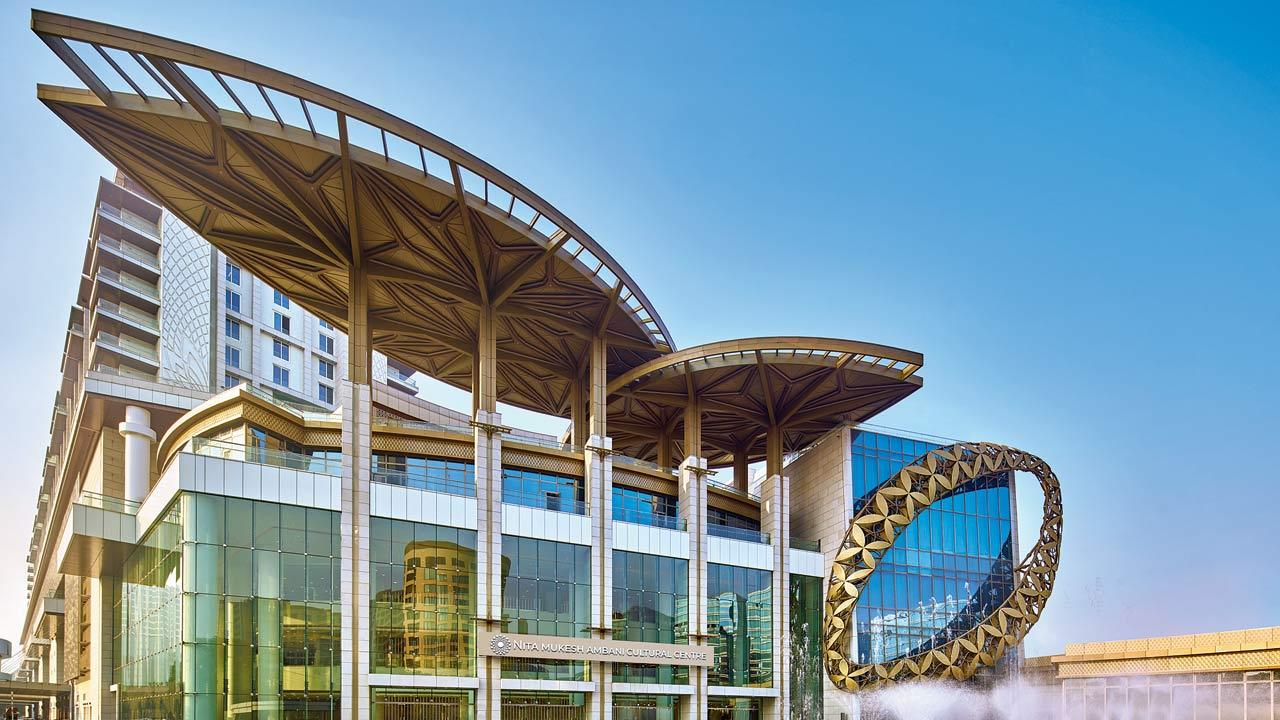 The lotus-themed NMACC
The lotus-themed NMACC
When NMACC opens to the public on April 3, apart from Khan’s musical, there will be two other exhibitions showcasing simultaneously—India in Fashion: The Impact of Indian Dress and Textiles on the Fashionable Imagination at Pavilion 1, and Sangam/Confluence at the Art House, which will celebrate the works of contemporary artists influenced by India.
India In Fashion will showcase 140 iconic costumes from around the world and centuries of sartorial history. The exhibit has been curated by author and costume art expert Hamish Bowles, who is also Global editor-at-large at Vogue.
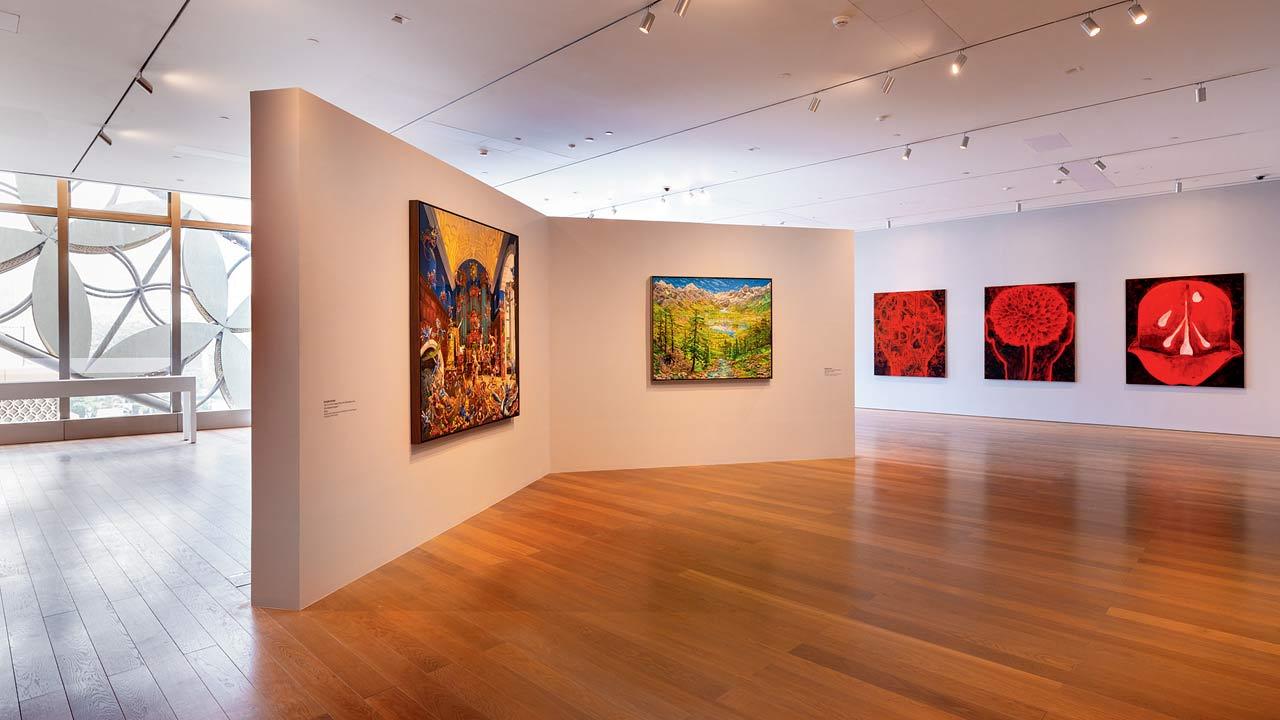 Sangam/Confluence, curated by Jeffrey Deitch and Ranjit Hoskote, will be showcased at the Art House, and will feature over 50 artworks and installations by five Indian and five international artists
Sangam/Confluence, curated by Jeffrey Deitch and Ranjit Hoskote, will be showcased at the Art House, and will feature over 50 artworks and installations by five Indian and five international artists
Patrick Kinmoth, Exhibition Design Director worked in collaboration with architect Rooshad Shroff “to create a transcendental space”. Such a show, Kinmoth admits, was always going to need a highly adaptable venue that could be transformed to lead the audience through time and space.
Kinmoth and Shroff created 10 thematic zones, each dedicated to a different expression of India-inspired fashion through the centuries. “So, you have the Chintz Zone, the Muslin Zone, the Hippie Trail, and of course, an entire zone dedicated to 21 stunning renditions of the Indian saree. Installed across these zones are over 20 western period pieces and over 30 contemporary Indian pieces, curated from 15 renowned museums from around the world, with loans from more than 15 personal collectors and fashion labels such as Christian Dior, Coco Chanel, Yves Saint Laurent and many others,” he shares.
![Nita Ambani, Founder and Chairperson, says the Cultural Centre has been “envisioned as the new home of art, artistes and audiences”; (right) Theatre director Quasar Thakore-Padamsee says for NMACC to truly transform into a flourishing cultural and creative hub like Juhu’s Prithvi Theatre, the programming should be planned in a manner that there are events running at least six days a week, as opposed to just on weekends. “That is a healthy kind of cultural audience consumption cycle. And that is my hope… We need to be able to use it [NMACC] more to take advantage of it”. Pic/Getty Images](https://images.mid-day.com/images/images/2023/mar/Now-showing-j_e.jpg) Nita Ambani, Founder and Chairperson, says the Cultural Centre has been “envisioned as the new home of art, artistes and audiences”; (right) Theatre director Quasar Thakore-Padamsee says for NMACC to truly transform into a flourishing cultural and creative hub like Juhu’s Prithvi Theatre, the programming should be planned in a manner that there are events running at least six days a week, as opposed to just on weekends. “That is a healthy kind of cultural audience consumption cycle. And that is my hope… We need to be able to use it [NMACC] more to take advantage of it”. Pic/Getty Images
Nita Ambani, Founder and Chairperson, says the Cultural Centre has been “envisioned as the new home of art, artistes and audiences”; (right) Theatre director Quasar Thakore-Padamsee says for NMACC to truly transform into a flourishing cultural and creative hub like Juhu’s Prithvi Theatre, the programming should be planned in a manner that there are events running at least six days a week, as opposed to just on weekends. “That is a healthy kind of cultural audience consumption cycle. And that is my hope… We need to be able to use it [NMACC] more to take advantage of it”. Pic/Getty Images
For those interested in major fashion moments closer to home, the exhibit features the works of Abu Jani Sandeep Khosla, Manish Malhotra, Rahul Mishra, Ritu Kumar, Sabyasachi Mukherjee, among others, along with the recreations of three timeless Bollywood costumes, including a lehenga worn by Kareena Kapoor Khan in Kabhi Khushi Kabhi Gham. “Each dress had to be meticulously crated, sealed in atmosphere-controlled cases and shipped from all across the world. They had to be accompanied by their curators, each of whom had to wait until the pieces were unsealed and installed,” he says.
What is, however unique about India in Fashion, he thinks, is its sheer scale and ambition. “Usually, exhibits of this nature take place in museums that already have a confining structure that you have to work within. Here we had in front of us the possibilities of enormous height, space, imagination—perfectly translated at the Pavilion, a transformative space within the Centre that offers an expansive convertible area ideal for travelling art shows and immersive experiences,” he says. The patronage he received from Nita Ambani, “made it possible for me to think big, and create a set that is not just a backdrop to the exhibits, but as powerful an experience as the dresses themselves, and built entirely in India”. “I believe it is time to start seeing the rest of the world from here, through India’s lens.”
Ranjit Hoskote was invited a few years ago, to co-curate NMACC’s inaugural visual art exhibition, Sangam/Confluence, in collaboration with American gallerist and curator Jeffrey Deitch. “This exhibition emerged from a process of dialogue between Deitch and me, and in productive collaboration with the art and culture team,” shares Hoskote.
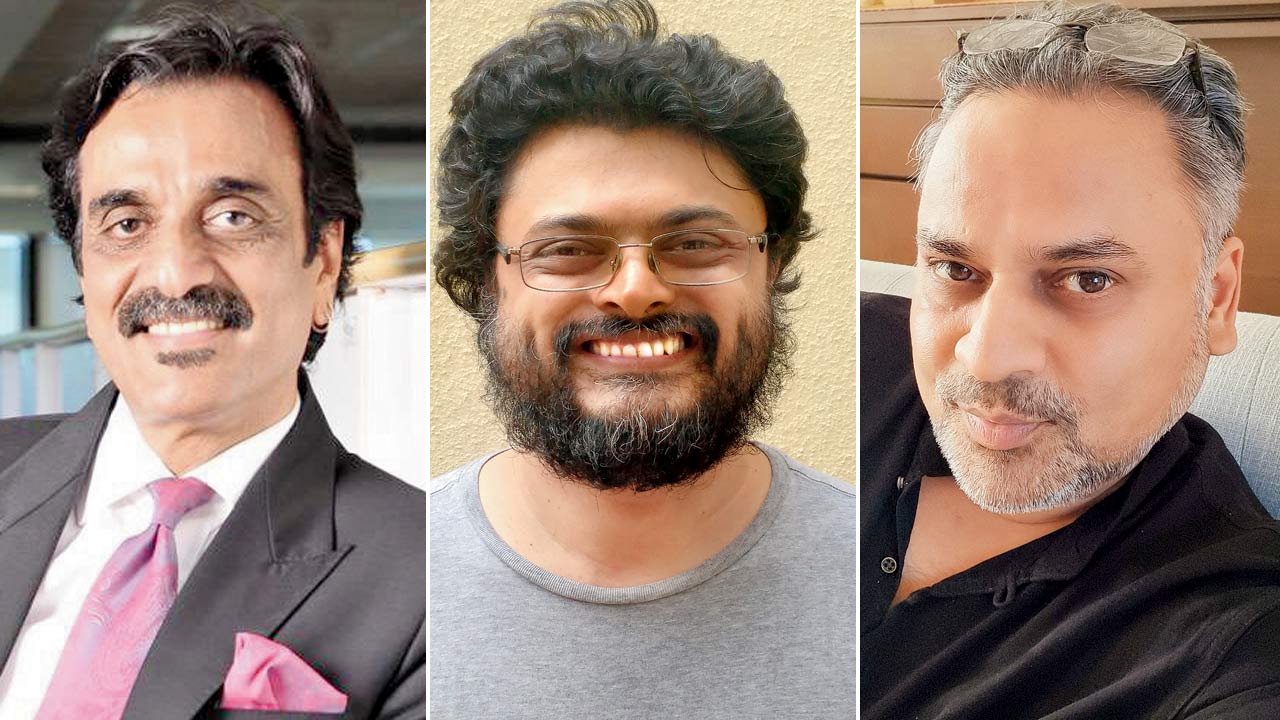 Brian Tellis, Arghya Lahiri and Jay Shah
Brian Tellis, Arghya Lahiri and Jay Shah
The show will feature over 50 artworks and installations by five Indian and five international artists. “Our principal criterion has been that the international artists should have a significant connection with India, in terms of their choice of practice or background or long familiarity with the subcontinent. And with the Indian artists, we focused on those who navigated inventively between plural pasts and emerging futures, to present diverse salient aspects of a kaleidoscopic art scene,” he says. The Art House spans across four floors. “Architecturally, the different floors have a sense of interconnectedness, which has been played upon with pertinent quotes by and about the artists displayed along the staircase,” says Hoskote.
The exhibition will also feature an audio guide for guests, for which Hoskote has lent his voice. “This audio guide is part of the Cultural Centre’s larger vision of making art accessible to all and will give guests a more immersive experience.”
While The Grand Theatre is for events that lend itself to a larger audience, the Ambanis, says the NMACC representative, also “wanted to cater to a wide range of arts, and foster younger and emerging artistes who are keen on doing more intimate work”. That’s how the idea for the 250-seater The Studio Theatre emerged. The theatre features a telescopic seating system that allows quick and easy transformation depending on the needs of the event.
The Cube, which can accommodate around 125 people, is meant to be a “playroom”, he says. It has a moveable stage and seating. The space can be configured for experimental theatre, spoken word, stand-up comedy and music. “The room also has special micro perforated acoustic wood, to tone down some of the higher and lower frequencies in the room. The stage is all sprung, it is designed with resilient pads, so that when people dance on it, they don’t hurt their shins. It feels like the room is giving back something to the artiste as well.”
The Cube and The Studio Theatre are the two spaces that theatre director Quasar Thakore-Padamsee is most hopeful about. Padamsee, who is artistic director of the Mumbai-based arts management company QTP, says, “These smaller spaces are going to prove vital, as newer ideas get tried out. It will open up the format, and for different kinds of work and configurations.”
But for these spaces to truly transform into flourishing cultural and creative hubs like Juhu’s Prithvi Theatre and NCPA at Nariman Point, the programming should be planned in a manner that there are events running at least six days a week, as opposed to just on weekends. “That is a healthy kind of cultural audience consumption cycle. And that is my hope… We need to be able to use it [NMACC] more to take advantage of it.”
Theatre director Rahul da Cunha whose most ambitious reality-show based musical, Sing India Sing, was staged in 2018 at the NCPA, says that for any new platform to be effective, it has to provide “bells and whistles” along with massive space. He points out to the recent NCPA production, Every Good Boy Deserves Favour, a political satire written by Tom Stoppard and directed by Bruce Guthrie, staged at the Jamshed Bhabha Theatre earlier this month. “The cast is Indian [Neil Bhoopalam, Denzil Smith, Soharab Ardeshir, Deepika Deshpande Amin], but the entire technical crew is from abroad, including the lighting designers, set and production designers. What’s interesting to think about is whether the NCPA felt [that] they needed better expertise. Sometimes, the directors and writers have the vision, but the technical and design team isn’t able to realise the vision, because they don’t have the space to work with in the first place.” With NMACC offering a larger venue, he feels that directors might now be able to rope in film set designers, “the Sharmistha Roys of the world who’ve often felt bound by [restricted stage] space”.
Production designer Omung Kumar was the force behind the set for Bollywood’s first musical Zangoora-The Gypsy Prince, which premiered in 2010 at Kingdom of Dreams, an entertainment complex in Gurugram, which shut last year. The play was then a first-of-its-kind spectacle of magic, dance, animation and special effects with flying acts and screen wings. “I have always wanted to do something magical in Mumbai, but because of the limitations of its venues, the city has missed out on a lot,” he feels. “When I work in open grounds, it’s easier to build something from scratch. But [in a controlled and closed environment] there are only challenges really… you can’t tamper with the floor or ceiling. Often, I have had to work backwards to make my vision fit into a space. If I have a stage of a certain height, depth and breadth, one which is adaptable and which provides adequate space for my props to move in and out, I will be able to think bigger,” he says.
Jay Shah, vice president, Cultural Outreach at Mahindra Group, which has given Mumbai several cultural festivals, including the annual Mahindra Blues Festival, says finding appropriate spaces for the appropriate genres of music and culture, has always been a struggle in India. “The Blues Festival and Mehboob Studios [in Bandra] are a match made in heaven,” he says, “But otherwise, as organisers, we have always had to be very innovative… almost desperate, because we don’t have a plethora of options available to us. I feel NMACC will fill a huge gap. It’s very welcome.” One of the large-format festivals that Shah says he’d like to replicate is the Mahindra Theatre festival, which is held at Delhi’s Kamani Auditorium and Shri Ram Centre. “If we had to do a theatre festival in Mumbai, NMACC would be a perfect perch… I think with a centre like this around, it will give us some inspiration to conceive newer festivals that can use the space.”
Over the last five years, the city, says Padamsee, has seen an uptick of smaller performance venues coming up. But light designer and director Arghya Lahiri says many of these spaces, again restrict the creators, given the “size, height and in many cases, power”. “And then, it immediately starts to play into budgets… so if you need to hire lights, it means an additional cost per show.” These restrictions may not exist in a larger venue like NMACC, which promises great infrastructure, but adaptability and flexibility, he feels, is going to be key in the future. Lahiri believes everything will now depend on how the NMACC team approaches “the theatre-making population of Mumbai and India”. “Have the curators and artistic directors, for instance, spent some time to understand how theatre functions in this country, or what Indian, or even local [Marathi or Gujarati] theatre needs? I think the proof of the pudding will be in the eating,” he says.
Entertainment professional Brian Tellis agrees that accessibility to performers should be at the heart of any new venue. “Bringing international talent into India will of course help as will bringing potential Indian consumers to the venue. But giving young, new Indian talent an opportunity is also important. We are so rich in the arts, and one of the reasons that it’s unfortunately dying is because it doesn’t appeal to today’s contemporary youth. So, contemporarising the content is going to be a bigger challenge.”
And then comes the big question of budgets. “Can we afford to perform here?” Lahiri wonders. Da Cunha adds, “We will need sponsors. The venue is only one part of the problem… I am going to be charged a lot of money if I am going to be getting access to such a large space. This is going to be particularly challenging for home-grown productions. The problem is that the economics of theatre have never quite worked out in this country. We cannot simply say, here’s a new space, now dream! They will also need to say, ‘…Now dream, and we will help you make that dream a reality’. Otherwise it may run empty.”
Padamsee admits that starting a new institution takes time and stamina, both artistic and financial, to become viable. “But because of the promoters and team behind this venue, the hope is that they will have the capital to support it.”
He is also interested in seeing how NMACC interacts with its neighbourhood. “Everything in BKC has been placed… in that, I mean it has come from outside. There is very little that is organic about it. But there are communities not far away in say, Kalanagar and Kurla, that can engage with the centre... whatever programming we do, should not be external to the people. ‘How are we going to be inclusive’ will be a challenge. But, that’s how you get people to take ownership of a space,” he says, adding, “This is undoubtedly, a very exciting time for theatre and the arts. This centre is the steroid injection we needed to take things to the next level.”
2,000/125
Number of seats in the largest and the smallest performance spaces housed at Nita Mukesh Ambani Cultural Centre (NMACC)
 Subscribe today by clicking the link and stay updated with the latest news!" Click here!
Subscribe today by clicking the link and stay updated with the latest news!" Click here!








